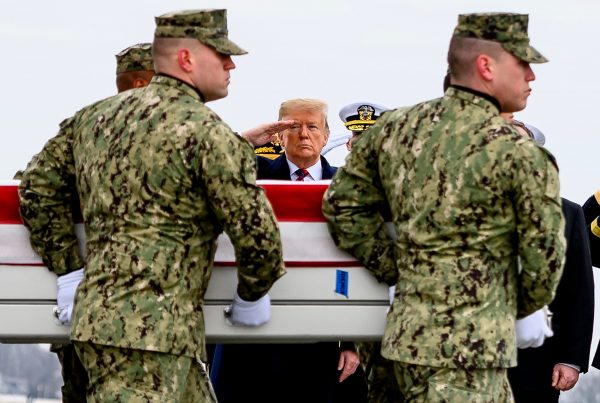If they don't act, white Americans will soon be subsidizing their own destruction.
Supreme Competence

SCOTUS was correct to exempt service academies from its ban on race-based admissions.
The Supreme Court’s decision in Students for Fair Admissions v. Harvard College and a companion lawsuit against the University of North Carolina this past June, ruling unconstitutional and illegal the use of racial preferences in college admissions, was a victory not just for fairness in higher education, but also for the principle of equal justice under law and the goal of making our political order colorblind. For too long, what were originally described as policies of “affirmative action”—making a concerted effort to locate and admit well-qualified students from “underrepresented” racial, ethnic, geographic, or economic groups—had been twisted to denote radically discriminatory policies that gave huge, unearned advantages to members of favored minorities—blacks and, to a lesser extent, Latinos—over Asian American and white applicants with far stronger academic records. Ever since Justice Lewis Powell introduced the favored term “diversity” in his opinion in the 1978 Bakke case, in practice this has meant only favoring blacks and Latinos at the expense of whites and Asians.
The real result of these policies, as Justice Clarence Thomas emphasized in his concurring opinion, was not to promote racial harmony but the opposite: to foment resentment not only among white and Asian applicants who were excluded solely on account of their skin color, but also on the part of black admittees who felt that their real achievements were automatically disparaged as the result of favoritism. Additionally, as noted in Richard Sander and Stuart Taylor’s book Mismatch (2012), those policies placed some blacks and Hispanics “into environments where they are less likely to succeed academically relative to their peers,” often as a result of inferior secondary-school education.
In his majority opinion for the Court, however, Chief Justice Roberts was careful to exclude the nation’s military academies from the decision, in view of what he called “the potentially distinct interests” that the service academies represent. While Justice Sonia Sotomayor called the exclusion “hypocritical” in her dissent, it was an eminently prudent move. Nonetheless, the exclusion has now become a potentially live judicial issue. Students for Fair Admissions (SFFA), the group that launched the original lawsuit, has now sued the U.S. Military Academy at West Point, contending that the ban on “race-conscious” admissions should extend to the service academies.
To understand why the suit is misguided requires taking account of the distinctive nature of military leadership, for which future officers are being trained. Unlike executives in civil government, business, academia, or the medical and dental professions, military leaders must have the capacity to inspire their subordinates in a time of war to do something that is, from a purely calculating point of view, literally irrational: risk or even sacrifice their lives for the sake of their country. While effective military leadership has always required a knowledge of strategy and tactics, enhanced in modern times by the study of military history and political science, and while a high degree of technological knowledge is now needed as well, such purely intellectual resources can never suffice to motivate subordinates not merely to obey orders, but go above and beyond the call of duty. And even in peacetime, military officers must be able to count on the strict obedience and loyalty of their subordinates to a greater degree than is called for in other areas of life.
The insufficiency of a merely academic approach to the training of military officers is beautifully illustrated in a scene from Mark Twain’s novel A Connecticut Yankee in King Arthur’s Court. In the novel, an eminently “practical” 19th-century American, factory foreman Hank Morgan, is magically transported back to the time of King Arthur, where he becomes the king’s chief adviser. Hank immediately turns his knowledge of modern science and technology, as well as the precepts of modern liberal political philosophy, to the project of “rationalizing” Arthurian customs and practices—an undertaking that will have ruinous consequences in the end.
In a chapter titled “A Competitive Examination,” Hank, who has induced Arthur to establish a standing army, observes an assessment of rival candidates for positions of military rank conducted by an examining board that Arthur has selected. The first candidate is a graduate of the “West Point” that Hank has secretly established, a young man who displays his knowledge of the entirety of “the science of war,” from strategy, tactics, and logistics through the operation of (19th century) weaponry to astronomy—none of which are remotely comprehensible to the board. But Hank is then astonished when the board instead chooses a candidate whose sole qualification is being of noble ancestry going back four generations.
When Hank asks Arthur how he can justify such a selection, the king explains that appointing officers who lack such lineage would bring the positions “into contempt” among the nobility, who would then scorn to accept them. Of course, relying solely or chiefly on such a criterion would make no practical sense. Yet, upon reflection, we recognize that Arthur has a point: to command effectively, military officers require more than just intellectual capacity to ensure that they are respected by others (and notably, we must add, their subordinates).
What does this scene have to do with the issue of maintaining racial preferences in the assessment of applicants to America’s military academies? In oral argument in the Fair Admissions case, U.S. Solicitor General Elizabeth Prelogar argued that “having a diverse officer corps is a critical national security imperative.” While a West Point spokeswoman said that the academy would not comment on the litigation “to protect the integrity of its outcome for all parties,” the New York Times observes that the SFFA complaint “revives a longstanding debate over whether national security depends on the military academies being permitted to use racial preferences to develop a pipeline of officers who mirror the demographic composition of the enlisted troops and the population at large.” An amicus brief filed “by former high-ranking officers and civilian military officers” in Grutter v. Bollinger, a previous case involving racial preferences in higher education, “argued that the percentage of officers serving in the Vietnam War who were African American was so small—only 3 percent by the war’s end—that it harmed morale and heightened racial tension in the ranks.”
Needless to say, this brief had no relevance to the issue of racial preferences in civilian institutions. But SFFA also maintains that the officers’ argument was irrelevant to the present-day military, particularly since the Vietnam War was fought mostly by draftees until 1973 and became unpopular in later years among the public generally. Moreover, SFFA points out that an amicus brief filed in support of the plaintiffs in the Fair Admissions case by a group of veterans observes that the composition of the military has changed significantly since the Vietnam War. As of 2020, 27 percent of Army officers were members of a racial minority, and 12.3 percent were black—only about one percentage point less than the black share of the national population.
On the other hand, the Biden Administration’s amicus brief notes that white service members currently account for 53 percent of active-duty military members—but 73 percent of officers—while black service members make up 18 percent of the active force—but just 8 percent of officers. About one in five officers come from the service academies. And since West Point’s latest enrolled class is “about 10 percent Black,” and West Point graduates constitute some one-fifth of all Army officers, it is reasonable to surmise that the proportion of black officers would have been significantly lower in the absence of racial preferences. (According to West Point’s website, its newly-enrolled class of 2027 is about 10 percent black, 11 percent Hispanic, 14 percent Asian American, and 1 percent Native American.)
The point here is by no means that the proportion of black officers in the armed services, or in the military academies, must be precisely proportionate to the number of black service members. It is rather that it is reasonable for service academies, while attentive to applicants’ academic records and leadership potential, to take account of racial diversity in order to prevent the development of any sentiment among black enlisted personnel of a divide between mostly white officers and a significantly larger percentage of black enlisted personnel. Moreover, maintaining a reasonable percentage of black officers may boost morale among black enlistees, who may be encouraged to hope for promotion to noncommissioned officer status by seeing the progress that blacks have made in the officer class.
Ever since President Truman ordered an end to racial segregation in the armed forces in 1948, the American military has been a major force for easing racial hostility and enlarging opportunities for black people, notably veterans, to advance in American life. This is one reason why the racialization of military ideology under DEI is so poisonous. We are reminded of Abraham Lincoln’s 1864 address to the 166th Ohio Regiment in the midst of the Civil War, where he encouraged them with the thought that the goal they were fighting for was the preservation of a political regime in which any of them might hope that his own son might someday occupy the presidential office.
Systematic racial preferences in college admissions and civilian employment have been a bane on American society since their introduction. But the late, great political scientist James Q. Wilson, who firmly opposed such preferences as a general rule, made an exception for police recruitment for reasons that parallel those I have offered here: the success of police departments depends not only on training and discipline, but also on general acceptance of the legitimacy of their authority, including their use of force when necessary, by the community in which they were to serve.
While SFFA has done a great service to America in overturning the use of racial preferences in college admissions, its latest lawsuit disregards the important prudential considerations that Wilson (and for that matter, Twain) brought to our attention. The Roberts majority was wise to avoid applying its otherwise fully-justified ruling to the nation’s military academies.
The American Mind presents a range of perspectives. Views are writers’ own and do not necessarily represent those of The Claremont Institute.
The American Mind is a publication of the Claremont Institute, a non-profit 501(c)(3) organization, dedicated to restoring the principles of the American Founding to their rightful, preeminent authority in our national life. Interested in supporting our work? Gifts to the Claremont Institute are tax-deductible.
America’s foreign policy drowns at the water’s edge.
Democrats are laying the groundwork for revolution right in front of our eyes.
Raising Boys in the Shadow of Endless War
Higher education has always been a religious quest.
The affirmative action regime took a major, if not fatal, blow.






